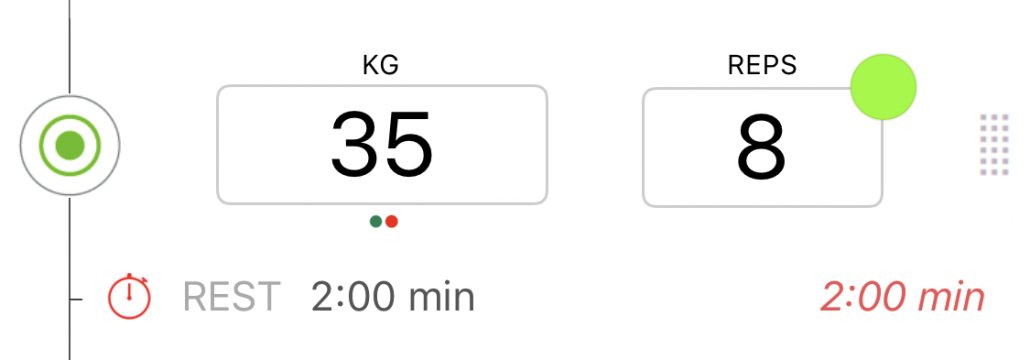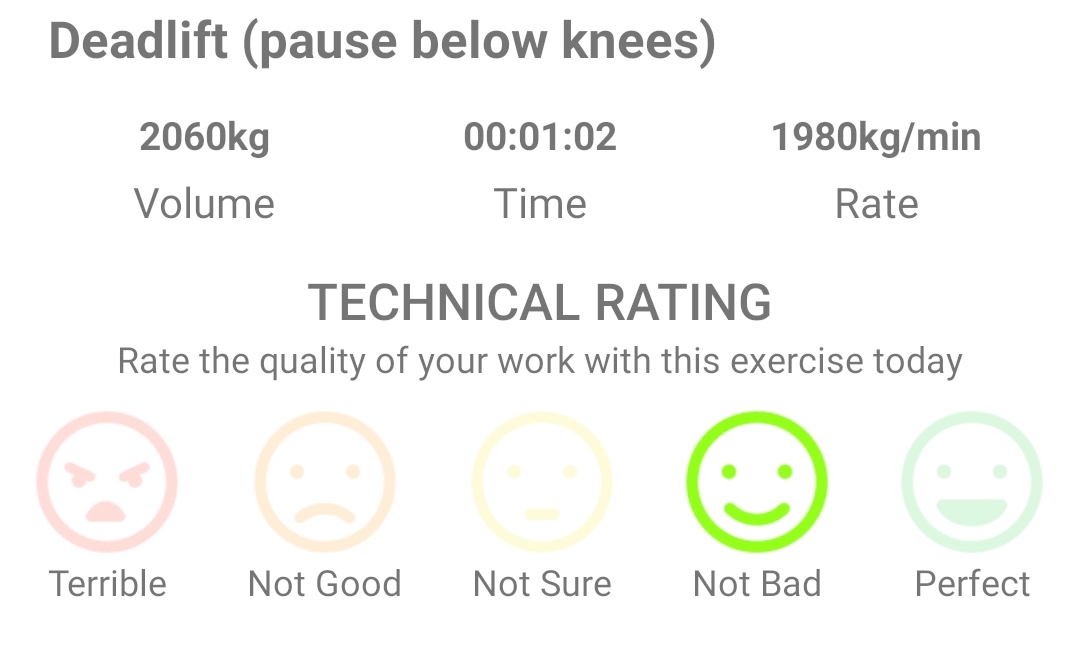Frequently Asked Questions
FAQs
What days should I train?
The most common and recommended training schedule is:
- Monday
- Wednesday
- Friday
- Saturday
This spaces out the workouts so you have as many rest days between workouts as possible. When you have a rest day between workouts you’ll get harder sessions (on average) than when you have back-to-back workouts.
That said, train whenever you can. Sheiko Gold can respond to any number of training sessions per week. So if life makes your training schedule a little erratic the AI will still be able to figure something out for you. Just be aware that with an erratic training schedule you are more likely to receive strain warnings and the AI will recommend easier workouts.
When do I use the app?
At the gym. Use Sheiko Gold in real-time as you do your workouts. It’s intended to function as a coach training there with you and will make some adjustments as you go. The UI is not optimized for use as a post-training workout log and you may run into difficulties trying to force that way of use.
How long do the workouts take?
The typical length depends on which training period you do but time will depend on your individual rest intervals
- Prep 0 (Push/Pull/Legs): 1hr 15min
- Prep 0 (Full Body): 1hr 45min
- Prep 1: 1hr 45min
- Prep 2: 1hr 45min – 2hr 15min
Can I do shorter workouts?
Yes. Ask for one of the partial workouts while in any training period except PPL. You can do main lifts only (i.e., squat + bench), single lifts (e.g., bench + accessories), or additional exercises only (i.e., GPP or bodybuilding workout).
I don’t plan to compete and just want to lift to maintain my health. Can I still use the app?
Of course! We train with our eyes on the big three lifts because they serve as benchmarks we can use to organize a long-term plan and measure its effectiveness. In order to develop these three lifts, you’ll also need to develop all the supporting musculature of the rest of your body. A bit of cardiovascular fitness can also assist recovery between higher rep sets (which can be punishing without it). You’ll also want to prioritize good sleep and quality nutrition to assist recovery between workouts. So we’re not neglecting anything. If you were to compete, you’d also need to fit into the right weight classes for your height to maximize your strength-to-bodyweight ratio. What else were you looking for when wanting to lift weights? It’s all here.
How can I preview the coming workout so I know what to bring with me to the gym?
After the observation period, tap “Sheiko” on the dashboard to generate a workout for today. Take a look at what you’re going to do then exit without saving. You can return to this workout anytime within 8 hours by tapping the “Sheiko” button again. Note: if you wait longer than 8 hours to perform the given workout, Sheiko Gold will let it expire and give you a fresh one.
What do the colored dots under the weights mean?
The assigned weights should be close to the ideal working weights. In the case that they are not, Sheiko Gold will sometimes adjust the weights up or down between sets.

- Green: the AI coach might increase the weights for this exercise during the workout
- Red: the AI coach might lower the weights for this exercise during the workout
It gives me 100kg for Bench Press (w/bands or chains). How much weight should I put on the bar?
The bar should weigh 100kg, just as it says. Then add your bands/chains as extra weight (that is not recorded). A good rule is that the extra resistance added by your bands/chains should be about 10% of your 1RM. So if you bench 150kg, the bands/chains should add an extra 15kg to the bar (7.5kg on each side).
What are the exercise ratings after my workout?
After you finish your workout you can do a self-evaluation of how things went. Rate these according to how proficient you think you are with the given movement. For example, did you actually pause the weight and bring it to a complete stop when it asked you to pause? Check yourself on video and be honest. If you’re cheating your reps then rate yourself lower.

You can find a collective view of your ratings by going to Dashboard > Exercises > Deadlifts, for example. You’ll see your post-workout self-evaluations there. If you see some that have been rated low you might consider switching to using those more often until things improve. Below we can see that this deadlift variation looks fairly proficient already.

I have pain in X area. Can I still use the app?
Most likely. You can tell the app you are injured during the pre-workout readiness questionnaire. You can then do work in other areas while your injuries rest. As you start to feel better, you can tell the app to gradually ramp up the stress. For example, you can progress from Injured > Warmups Only > Easy > Medium/Hard.
What do all the charts and tables on the main screen tell me?
These give you a snapshot of your current state. See this page for more info.
How do I record the weight for body weight exercises?
Make sure your exercise is configured as a body-weight exercise. Then simply record any additional weight you might add while lifting. For example, if your body weight is 80kg and you use a 20kg plate when doing pull-ups, input the extra weight (20kg) into the weight field.
I’ve added some new exercises I want to use. How do I know if an exercise is classified as Basic or Additional?
Did you read the Help section on the Exercises page? Do that. A quick shortcut you can use is this: if the exercise is mechanically similar to its competition form AND so is the weight on the bar, then it’s a Basic Exercise. For example, Bench Press with a 2-second pause — that’s essentially the same mechanics with only a 5-10% weight difference on the bar. Anything else not satisfying similarity in mechanics and weight is an Additional Exercise. Therefore, an Overhead Press is a shoulder exercise, not a bench press variation.
What does “High/Low x (Quality + Calories)” mean in the pre-workout question about nutrition?
You have 5 options for this:
- High-quality nutrition and a high-calorie intake = 2 x High
- Either a high quality of food or high-calorie intake = High
- Quality and calorie intake neutralize each other = Neutral
- Either a low quality of food or
low-calorie intake = Low - Low-quality
nutrition and a low-calorie intake = 2 x Low
What should I do if I’m mainly interested in hypertrophy?
Go to the Setup screen and set your training period to Prep 0 and flip on the PPL switch. This period fulfills many of the common requirements for a “hypertrophy block”. Take each set to failure (technical failure only on deadlifts) in the bulking mode as long as your wellness stays high. Sets taken to failure will place an increased demand on your inter-workout recovery ability. The stimulus-to-fatigue ratio of sets to failure is not optimal in this regard. However, sets taken to failure will also make the program bulletproof. It might not be optimal but it won’t fail either. You will accomplish your hypertrophy goals so long as you are eating enough for a steady weight gain. Our stance on training to failure is that the extra fatigue is therefore worth it.
Weight increases aren’t as predictable when doing the Sheiko workouts. Is that a bug?
Most likely the app wants you to take it easier on that particular day/exercise even though you could do more. See above for the meaning of the green/red dots under the assigned weight. Rest up and save it for the next time.